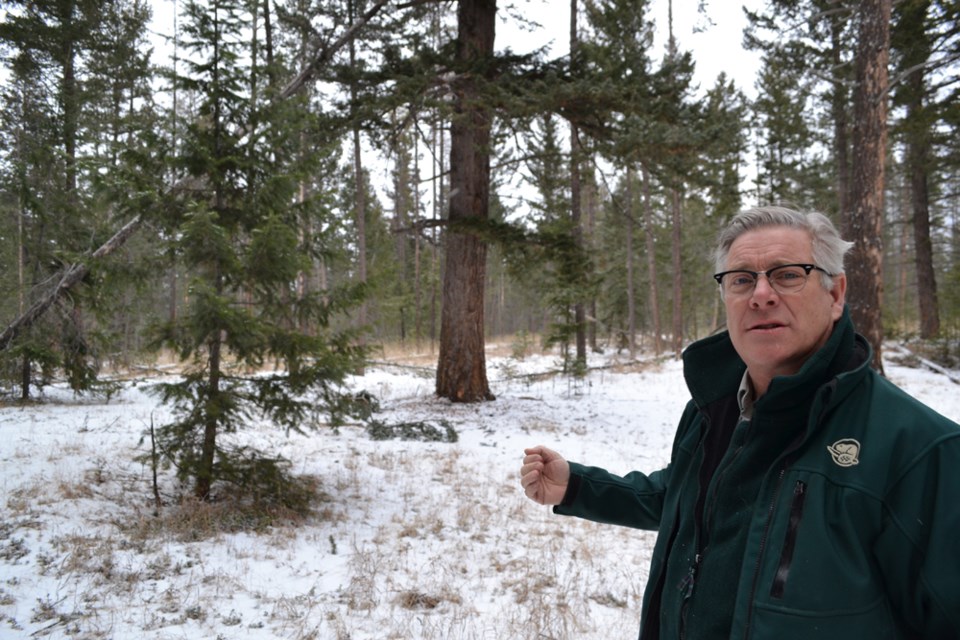
Jasper’s Lake Edith is the first neighbourhood in Canada to receive official FireSmart Canada community recognition.
FireSmart is an initiative of Partners in Protection, a nation-wide organization that promotes awareness and education aimed at reducing risk from wildfires. FireSmart is a key element of the organization’s program to reduce the risk of wildfire in threatened communities.
Lake Edith’s recognition comes after more than a decade of work by its residents, Parks Canada and the municipality of Jasper.
Alan Westhaver is a former Parks Canada fire and vegetation specialist, and was the driving force behind FireSmart initiatives at Lake Edith and in Jasper.
He explained that FireSmart’s aim is engaging residents to become proactive in how they care for their properties.
“It’s not about agencies or governments at all. The community recognition program is solely about groups of neighbours getting together and helping each other to reduce risk.”
Residents of Lake Edith encapsulate that spirit perfectly. They’ve been practicing FireSmart initiatives for more than a decade, and even have an official committee.
Each year they organize “work bees,” where the whole community gets together to maintain the work they’ve completed over the last decade.
To make a neighbourhood FireSmart, residents have to complete a couple of steps; the first is securing their own property. They do this by moving firewood away from the side of their house, pruning and clearing trees close to their home and installing sprinklers on the roof, among other things.
Dave Smith, a current fire and vegetation specialist for Jasper National Park, explained, these steps help create a “defendable space” around the residents’ homes, making it more likely firefighters will be able to save it if a wildfire comes near.
Shauna Gifford is the president of the Lake Edith FireSmart committee. She said her community really got behind the FireSmart initiative from the beginning, and after working on it for so many years it’s satisfying to be the first in Canada to get official recognition from Partners in Protection.
“The community’s been working with Alan for more than 10 years, and it’s been a very successful program, it feels great,” she said, especially after completing the “pages and pages” of paperwork it took to apply for the designation.
On a drive through recently “firesmarted” land near Lake Edith, Smith explained why FireSmart is so important.
Stopping his truck and hopping out, he waved his arm in the direction of the forest. He explained that crown fires—the fast-moving “walls of flame they always show on TV”— are so intense there is little fire fighters can do to stop them.
Those fires feed on the thick and abundant fuel sources in forests that haven’t been cleared. If you thin the forest, he explained, those fires will still burn, but they will become surface fires that burn with much less intensity, and are much more manageable.
Smith noted that the work individuals do around their properties at Lake Edith is part of a larger initiative of Parks Canada and the municipality, particularity the fire brigade, to thin out the forest in the Three Valley Confluence area.
Along with the enhanced ability to fight threatening fires, Smith pointed out that thinning the forest is extremely beneficial for biodiversity. Fire is actually a very important part of the natural ecosystem, but since humans need to prevent it from coming close to their homes, the nearby forests don’t benefit from its rejuvenating aspects.
By thinning out the forest manually, both through cutting and controlled burns, Smith said Parks is trying to emulate fire’s natural role.
As he walked through a recently thinned area he pointed out new grasses and plants springing up. He said there are significantly more species growing in the thinned areas compared to the untouched ones. This is not only good for the plant life, but for the animals as well.
Along with work around Lake Edith, Parks Canada and the Jasper Fire Brigade have also thinned 900 additional hectares of forest around the Jasper townsite and the Fairmont Jasper Park Lodge.
The fire brigade has taken over much of the work, and according to fire chief Greg Van Tighem, they will continue to do as much as they can for the foreseeable future.
Trevor Nichols
[email protected]
